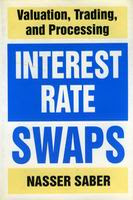Considered in isolation, the answer is, very little.
But nothing exists out of context, certainly not when it involves speculative capital that can only exist within a relation.
The critical difference between an MBS and a CDO is this, that an MBS is created to securitize mortgages, but CDO is a created to satisfy an arbitrage relation. Therein lies a world of difference.
The starting point of an MBS is the pool of available eligible mortgages. When all the mortgages in the pool are used up in the creation of the security, no more MBS could be created until the pool is replenished through the arrival of new mortgages. What is more, after an MBS is created, it must be marketed to investors.
In a CDO, the driver of the product creation is the demand, which is endless as long as the arbitrage opportunity persists; the availability of the eligible mortgage pool is secondary. Of course, a CDO cannot exist without mortgages. So in the face of the constant demand from a perpetual arbitrage machine that guarantees demands, what follows in a “free market” environment follows with the predictability and inexorability of day following the night.
First, the eligible mortgages run out so out goes the eligibility. “Alt A” mortgages, “No Doc” mortgages, subprime mortgages and any other form of mortgages are created and offered for the asking. New York Times, May 8, 2007:
[The founder of a mortgage broker] recalls being asked to make more “stated income” loans, in which lender do not verify the information provided by borrowers and brokers with tax returns, pay stubs or other documentations. The message, he said, was simple: You are leaving money on the table – do more of them.To do more requires offering mortgages to borrowers who cannot even make the initial payments. But if there is a will, there is away. So the terms are manipulated to artificially lower the payments for the first couple of years. Hence the appearance of 2/28 loans, where for the first two years, the interest rate is kept artificially low only to rise by over 50% afterwards.
Even this vast pool of credit impaired is soon emptied by the insatiable demand. Speculative capital then pulls out its ace-in-hole: it brings in new cash-flow generating “securities,” including tranches from other CDOs. Financial Times, Jun 8, 2006:
Investors in the complex credit derivatives known as collateralized debt obligations will soon be more easily able to add or reduce risk through an extra layer of derivatives. The International Swap and Derivatives Associations … yesterday published a … template for writing credit default swaps on cash flow-CDOs. Bankers in the industry said the driving force behind this new layer of business was the excess of investor demand for risk above what the cash-flow CDO industry could currently supply.“Industry” indeed.
The full cast of characters is now on the stage: home buyers and sellers, appraisers, mortgage lenders, real estate speculators, brokers, banks, investment banks, lawyers, rating agencies, “financial engineers,” product developers, fund managers and investors. As in the opening scene in Macbeth, the stage is set for the terrible things to come.
True to their nature and circumstances of creation, the CDOs finally broke the circuitry of arbitrage by a forcible revaluation of cash flows. The first sign of this rupture was the loss of quantitative funds that was universally interpreted as the “abstract” models of detached academics finally meeting the real world—and thus misinterpreted. What caused the loss of quantitative funds was the breakdown of the market relations that models (must) presuppose. The relations are the foundation of the “system.” Their breakdown is the materialization of the systemic risk par excellence.
Repricing alone, though, even of the severity we have seen, cannot in itself cause a widespread market breakdown. A crisis can develop only when the impact of speculative capital’s activities–its foot prints, if you will–come to disturb the structure of markets. We must therefore take a closer look at that structure, beginning with the role of broker-dealers and their clearing banks.






